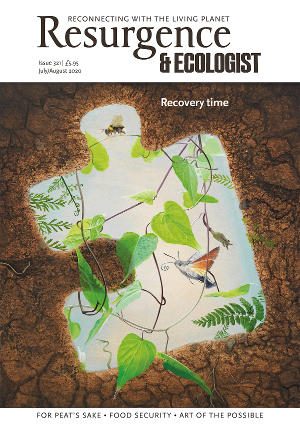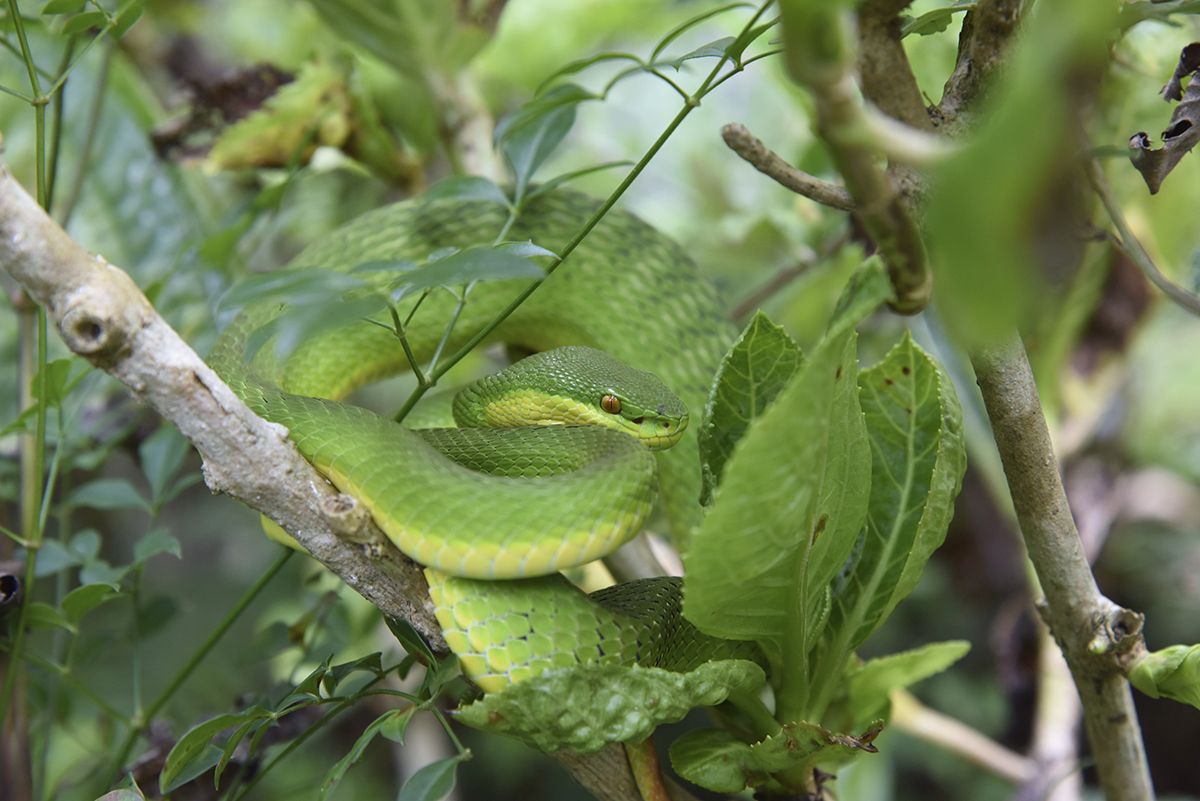We are standing beneath a small tree perhaps five metres tall. A creeper winds around its smooth trunk, and higher up several species of orchid and a bird’s-nest fern cling to the smooth bark. We are surrounded by forest: a young forest, but diverse, home to over 400 different plant species. Our feet must be placed with care to avoid trampling understorey herbs and small shrubs. Overhead a cloudless blue sky is visible between the trees, which have not yet grown sufficiently to form a closed canopy. Although it is winter and the air is cool, bird calls fill the air, and bees buzz around us. We are immersed in biodiversity.
It is always good to be surrounded by Nature, but what makes this moment priceless is that ten years ago there was no forest here, but just open grassland ranging over long-abandoned tea terraces. Not for more than a thousand years has rich subtropical forest clothed the slopes of Tai Mo Shan, the highest mountain in Hong Kong. Even six years ago, when the two of us came to see the miraculous transformation taking place here, the scene was very different.
The visit inspired an article for Resurgence & Ecologist entitled Seeds of Hope on the Mountainside (Issue 287).
This place, like so many around the world, bore the scars of human exploitation. It had been farmed for tea until the soil was exhausted and the crop failed. The land was then abandoned and neglected, razed by fires escaping from the farms below. Its future had been blighted. We often hear that Nature can take care of itself, can heal such harm, if given time and left to its own devices. But that is not really true, even if a covering of vegetation eventually returns. Here on Tai Mo Shan, patches of ancient forest had survived in deep gullies where streams flowed year round. A few of the toughest shrubs had even returned to the open grassy slopes, their seeds blown on the wind, brought in by birds, or surviving hidden in the soil seed bank. Perhaps a thousand more years might see a stunted forest standing here. But even then, many species that had flourished in Hong Kong and South China in prehuman times could never have returned, as there was nowhere for them to come back from.
Flora of Hong Kong lists about 2,200 native species, but the majority are rare. Today many survive only as scattered individuals, often clinging to life in tiny groves of feng shui woodland pressed in on every side by urbanisation. There are, in effect, no sources of seed to enable Nature to recover. Tens of thousands or hundreds of thousands of years might perhaps permit a gradual increase in biodiversity, but even then many of the original inhabitants would still be missing. The most obvious absences would be large predatory mammals such as the tigers that survived into the early 20th century in Hong Kong, and their prey. Nature can indeed work wonders, but when biodiversity is fractured and the web of life is broken, no amount of time is enough. Here, as in most places around the world, only careful human intervention, through applied horticulture or ‘gardening the Earth’, can restore diverse forest biodiversity.
Biodiversity is not just the large number of species on Earth, estimated at between 5 and 13 million. It also encompasses the interactions between them: the web of life. Complex beyond comprehension, the web has been woven over 3 billion years since the origin of life on Earth. Species have not involved in isolation, but through interaction and interdependency. From the first, simple ecosystems on Earth, life has diversified and evolved. “We can live by the sun, soil, and water, which are all gifts of the benevolent universe,” Satish Kumar wrote in Elegant Simplicity. This is also how plants live. Anchored in the soil, they use water, sunlight, and carbon dioxide from the air to produce energy by photosynthesis. This energy is the foundation for the vast diversity of interacting life forms that are our biological inheritance, and we too are part of that web. But from our earliest prehistory we have changed the balance, clearing land for cultivation, removing predators to protect flocks, and now we have even altered the carbon and water cycles of our planet. Living in a time of climate emergency and biodiversity crisis, we have finally come to understand the part forests play as the lungs of the Earth and as reservoirs of biodiversity.
We have recognised the importance of planting trees as a natural solution to many of the gravest threats we face. And so it is, but as with all things in life, it matters how you do it. Too often the wrong kinds of tree are planted. Fast-growing exotic species may quickly take root, but they do not support the insects, birds, mammals and fungi needed to re-establish the local ecology. Even when native species are selected for planting, too little attention is given to preparing the ground or to aftercare, and many young trees simply fail to establish. What is happening here at Kadoorie Farm and Botanic Garden in Hong Kong is the finest application of horticultural science to repair the web of life. Seed from native tree species, some of the rarest represented in the wild by only a few individuals, is painstakingly gathered and brought into the nursery, where the young plants are cared for until they are ready to be planted on the mountainside and protected by tree guards. Biochar and mulch are used to improve the soil, and the structure of the trees is improved by pruning and crown lifting to create the highest possible canopy of single-stemmed trees, to allow a multi-layered forest consisting of herbs, shrubs and small, medium and large trees to come back. At first the tough grass must be removed manually to prevent competition, but as the trees grow they shade out the grass so that other rare forest species such as shrubs, lianas, epiphytes and herbs can be introduced. Cohorts of saplings are planted in the understorey to replace fallen trees. Planting a mix of all these different life forms together recreates harmony and balance and gives biodiversity a boost, which in return maximises the resilience needed by the young forest to withstand typhoons, droughts, frost and climate change.
This incredible resilience was provided for free by Nature before humans removed forests on a landscape scale. Fortunately, there is hope that much of this resilience can be rebuilt by helping the young forest to mature. Best of all, this exemplar of best practice in forest restoration stands as an inspiration that could be replicated around the world.
Stephen Blackmore is Chair of the Board of Botanic Gardens Conservation International (www.bgci.org) and Queen’s Botanist.







